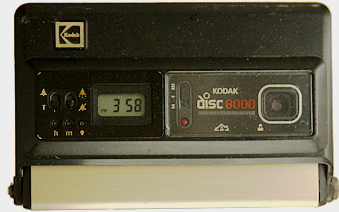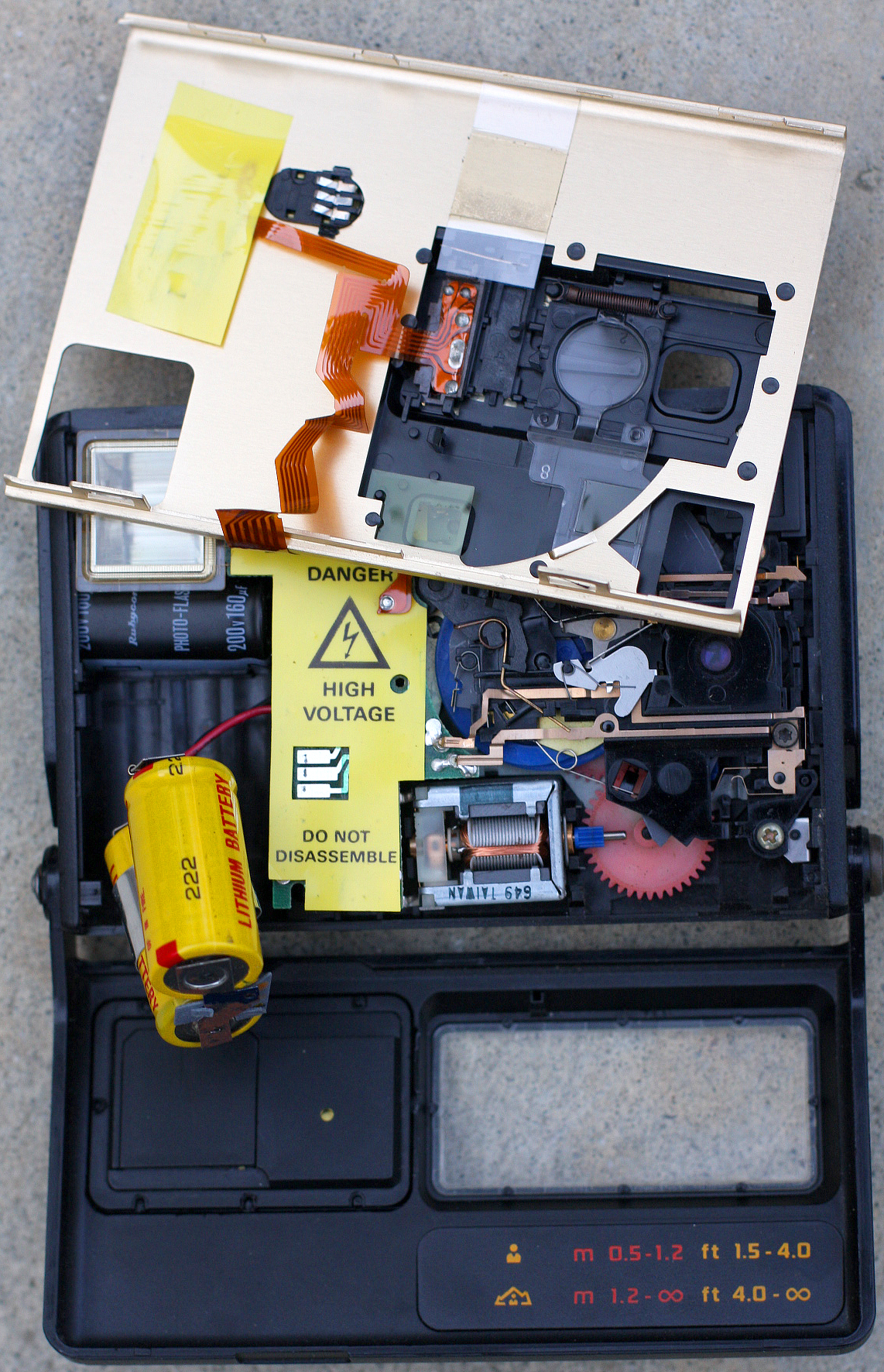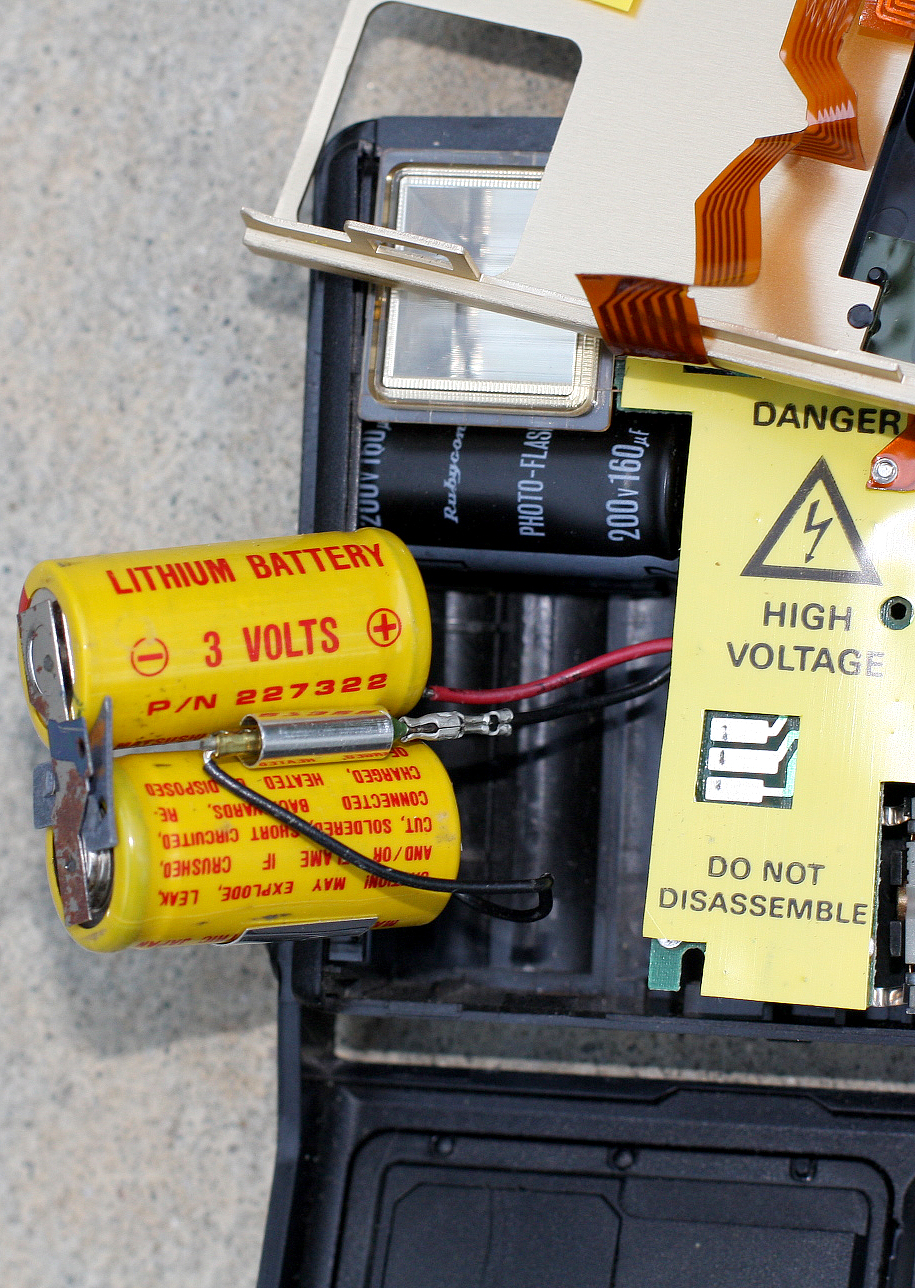
Approx. dates of manufacture: 1982-1984
Approx. original price: $150
Approx. street value: None
When Kodak introduced the Disc system in 1982, there were four cameras, the 2000, 4000, 6000 and 8000, in ascending order of price and features. The 2000 was not meant for the US: it was the very basic machine, and it used a 9v battery. The 4000 was the base model with a silverish-bare-metal finish, and all it had was a shutter button and a slide switch for the lens cover. The 6000 was black, it had a black cover which folded down out of the way (or under and back so that the camera could sit upright on a table). Since the folding cover protected the lens, the slide switch was used for a close-up lens which slid in and out of position.
This 8000 was the top of the line. For the extra money you got a self-timer, single-shot and 3-shot burst modes; you got a little LCD clock-alarm built into the cover (which is not integrated with the camera at all, so it's just a tiny travel-alarm), and you got a spiffy gold finish. Modern Photography called it gaudy, but that was 1980 and they had no notion of the design horrors the new millenium would bring.
The disc system was a neat idea that flopped badly. It had the same problem that 110 film had—it was grainy and not very good even at 4x6" snapshot print size. My guess about what happened is that someone in the Film Division said that there was going to be a great new color film coming out soon that was going to have extraordinarily tight grain and ultra-fine resolution. It may have been the T-grain films. So the Camera Division designed this thing but the Film Division never delivered. If this were Polaroid when Edward Land ran it, they'd have worked on the film until they got it. Kodak did not.
Reader Chris Lewis disagrees: "Actually they did. The problem was not the film, it was the processing. The film was meant to processed by a 6 element system not the usual 3 element used for processing 35mm film. Few labs wanted to go to the expense of acquiring the new processing equipment so they processed the discs using their existing equipment. Of course they turned out badly, had they used the "right stuff", things would have turned out right. Actually the acetate film backing was thicker than 35mm or 110 film therefore more rigid which meant they gave a better format for a flat surface. The cameras themselves were all fitted with fairly decent aspherical lens."
I bought this solely to include here along with the 4000, and because I like paying $2 for cameras that originally cost $150 when they were new.


I got an email asking what batteries are in this thing. I didn't know. I checked various places on the internet and nobody else seemed to know either, so I pulled out my pocket knife and prised the cover off (it comes off if you're careful; getting it back together took a little more courage and finesse). Click on the photos for larger versions.
So here's the answer, as you can see. It's two 3v lithium batteries, Part Number 227322. They were made by Matsushita Electric (aka Panasonic). I believe you can find something like them on eBay, or a local battery store may be able to help.
The battery that runs the clock is a different story. That's an Energizer CR2025 (or equivalent) coin battery, which is easy to get. To access it, flip the plastic cover down and look for the two square plastic panels that form the back side of the clock. The battery cover is the panel that's closer to the edge. It is also just a plain cover; the cover next to it has a little hole or divot in the center. If you look at the above, right-side photo, the cover I'm talking about is just underneath those yellow lithium batteries.
Put a fingernail or a small, flat-blade screwdriver under an edge of the cover and it should pop out easily.

